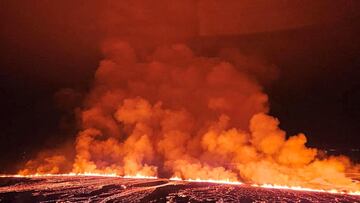CLIMATE
What is the difference between magma and lava?
The Ruang volcano eruption has triggered an important question: what is the difference between magma and lava?

In Indonesia, residents surrounding the Ruang volcano are under an evacuation order after a tsunami warning was issued following various eruptions over the last week. These warnings come shortly after ones issued by Japan and the Philippines following a 7.4-magnitude earthquake that hit Taiwan earlier this month.
The situation on the remote island of Sangihe Islands, which in 2010 was home to a little over 130,000 inhabitants, has led to the airport on Sulawesi, a nearby island to be closed.
The images have led many to wonder what the differences are between magma and lava, as geologists use the two terms in ways that do not always clearly distinguish between the two materials.
The difference between magma and lava
Following the volcanic eruption in La Palma, geologist Eduardo Suárez of Spain’s National Geographic Institute explained the difference. “Magma is the word given when it is inside the earth, and lava when it comes to the surface,” said the geologist.
As for the process of magma being transformed into lava, the material begins as molten rock (magma) that breaks through the layer surrounding the rock that is displaced during the eruption. These fractures that allow the magma to rise to the surface produce waves that can be measured by seismometers, the same machines used to measure the strength of an earthquake. Additionally, if the waves are strong enough, they can be felt as earthquakes by those in the surrounding area. Lava is the magma that makes it to the surface that begins to flow.






